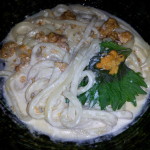JQ Magazine Seeks Writers for Fall 2013!
As we head into fall, JETAA New York’s JQ magazine continues to provide content with an ever-expanding array of articles, interviews and features (see our recent stories here). We’re now looking for new writers, including recent returnees and JET vets, from all JETAA chapters worldwide for posting stories via our host at the global JET alumni resource site JETwit.com. (Scribes are also encouraged to join the JET Alumni Writers group on LinkedIn.)
Below are story ideas grouped by JET participants and alumni (JET World) and those more on Japanese culture (Japan World). And if you’re a JET or JETWit contributor from anywhere in the world with a story idea of your own, let us know!
Click “Read More” below for our fall 2013 ideas pitch package, and contact JQ editor Justin Tedaldi (magazine [at] jetaany [dot] org) to sign up for stories.
Now, JQ is looking for additional help behind the scenes! Our editor (celebrating his fifth anniversary at the helm in November) is seeking a capable assistant to help with the posting, social media sharing and story assigning across all JETAA chapters. If you’re a wiz with WordPress, Facebook and Twitter, and enjoy all forms of Japanese arts, events and media, reach out to Justin. Thanks and yoroshiku!
Percival Constantine at the Japan Writers Conference
Percival Constantine (Kagoshima 2008-2013) is a writer for GaijinPot and the Pulp Ark Award nominated author of several New Pulp novellas, including “The Myth Hunter” and “Love & Bullets.” He is also an editor at Pro Se Productions and resides in Kagoshima. At the Japan Writers Conference this year, he’s going to give a presentation titled “Self-Publishing: The Pros and Cons of Bypassing Traditional Publishing.” Here’s the official description.
 With the advent of new technology such as print-on-demand services and ebooks, the market has opened for authors who wish to go it alone and publish their books without the use of an agent or publisher. There are both positives and negatives to this approach.
With the advent of new technology such as print-on-demand services and ebooks, the market has opened for authors who wish to go it alone and publish their books without the use of an agent or publisher. There are both positives and negatives to this approach.
In the past, if one wished to publish a book, it required finding an agent and the agent locating a publisher for the product. Thanks to print-on-demand and ebook publishing, self-publishing has become easier than ever for aspiring authors. There are both positive and negative aspects to this. On the plus side, there is no need to write a number of query letters and send out submissions to agents or for the long wait before a book ends up on the market, as well as an increased share of the royalties. On the downside, the self-published author is responsible for all aspects of the production process, from editing the manuscript, laying out the book, creating a cover, and promotion. And though there is a larger share of royalties, the amount of copies sold can be far fewer. This presentation will examine the pros and cons of self-publishing.
To learn more about the Nov. 2-3 Japan Writers Conference, visit the official website HERE.
To learn more about Percival, visit his site HERE.
WIT Life #251: Honolulu’s Byodo-in
WIT Life is a periodic series written by professional Writer/Interpreter/Translator Stacy Smith (Kumamoto-ken CIR, 2000-03). She starts her day by watching Fujisankei’s newscast in Japanese, and here she shares some of the interesting tidbits and trends along with her own observations.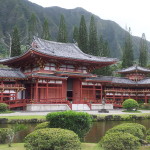
Every time I come to Honolulu I try to find a new place to explore that I haven’t tried before, and during this trip my discovery was the Byodo-in Temple in Kaheohe. This is the city where my local JET friend lives, who said it was a must see. For me this was a particularly special spot, as the temple is a replica of the original Byodo-in in Kyoto Prefecture’s Uji-shi, where I first lived in Japan as an exchange student. The Hawaiian version did not disappoint, as it is located at the foot of the 2,000 foot tall Koʻolau Mountains which provide breathtaking background scenery.
Honolulu’s Byodo-In was built in the 1960’s to commemorate the 100th anniversary of the arrival of the first Japanese immigrants to Hawaii, who came to work in the sugar plantation fields. In consultation with Hawaiian religious representatives, the developer of the park chose to Read More
Book: “This Japanese Life” published by JET alum blogger Eryk Salvaggio
 Thanks to AJET Chair Kay Makishi for the heads up on Fukuoka JET alum Eryk Salvaggio who writes the blog “This Japanese Life” and recently published a book by the same name. You can read more about Eryk in this Japan Times interview with him from 2012.
Thanks to AJET Chair Kay Makishi for the heads up on Fukuoka JET alum Eryk Salvaggio who writes the blog “This Japanese Life” and recently published a book by the same name. You can read more about Eryk in this Japan Times interview with him from 2012.
About the book: http://thisjapaneselife.org/this-japanese-life-the-book/
Most books about Japan can tell you how to use chopsticks or say “konnichiwa.” Few tackle the real stress of life in a radically different culture.
The author, a three-year resident and the writer and researcher behind one of the best Japan blogs, tackles the thousand tiny uncertainties of life abroad with honesty and wit.
Perfect for anyone about to leave home for Japan or elsewhere, This Japanese Life will deepen any reader’s understanding of Japanese culture as it’s fused into a method of dealing with the hardships of working and living there.
About Eryk:
Eryk Salvaggio was an American newspaper editor in Bangor, Maine before teaching English in Japan with the JET Program. He lived in Fukuoka City from 2010-2013, writing a blog, This Japanese Life, about Japanese culture and the tiny anxieties of being an expatriate.
The site was named one of the best Japan Blogs by Tofugu and was spotlighted by The Japan Times. Salvaggio has written for McSweeney’s, The Japan Times, Tofugu and Kulturaustausch.
His work as a visual artist has been covered in The New York Times and elsewhere.
He currently lives in London.
WIT Life #250: Mochi, mochi and more mochi!
WIT Life is a periodic series written by professional Writer/Interpreter/Translator Stacy Smith (Kumamoto-ken CIR, 2000-03). She starts her day by watching Fujisankei’s newscast in Japanese, and here she shares some of the interesting tidbits and trends along with her own observations.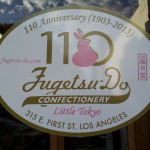
I am at the tail end of my State Department interpreting gig here in Hawaii, and was glad to find that even when you are far from home you are never far from other JETs. I sat down to breakfast the other morning in my hotel, and who did I see but fellow NY JET alum Mark Flanigan! He was here on ICU business, and I was lucky enough to catch him before he flew back to NY that night. Small world! Tomorrow when work ends I’m planning on Read More
JET alum publishes new book on corporal punishment and discipline in Japan’s schools
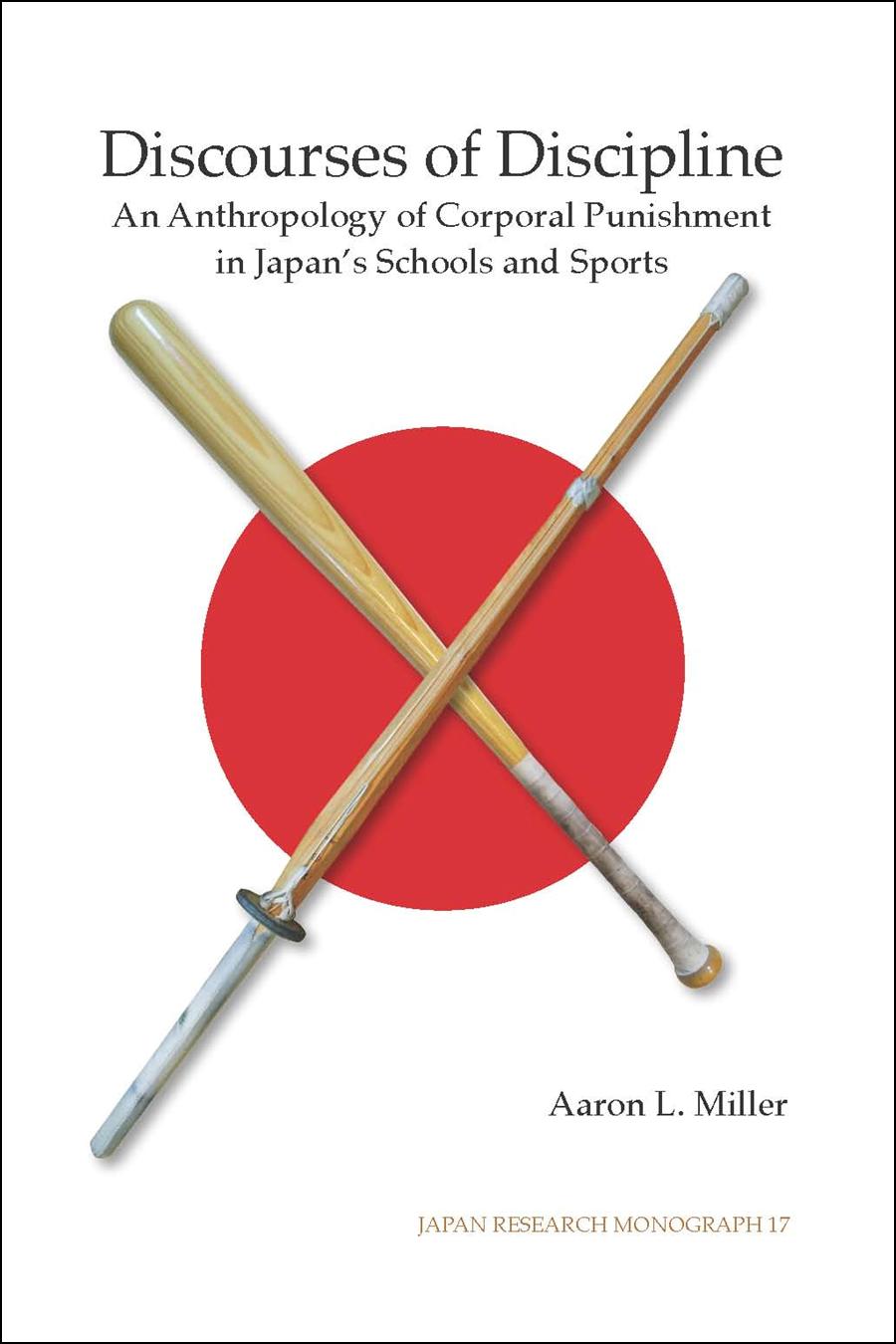 Thanks to AJET Chair Kay Makishi for passing along info about this interesting new book by Aaron Miller (Ehime-ken, 2002-04).
Thanks to AJET Chair Kay Makishi for passing along info about this interesting new book by Aaron Miller (Ehime-ken, 2002-04).
About the Author (via Amazon.com):
Aaron L. Miller, PhD is Assistant Professor and Hakubi Scholar at Kyoto University, affiliated with the Graduate School of Education, and Visiting Scholar, Stanford University Center on Adolescence. His academic research explores the relationships between education, sports, discipline and culture. His website is www.aaronlmiller.com.
About the Book:
This book is about the many “discourses of discipline” that encircle the issue of “corporal punishment” (taibatsu). These discourses encompass the ways that people discuss discipline and the patterns of rhetoric of what discipline should be, as well as what discipline signifies. By scrutinizing these discourses of discipline, this work disentangles the allegedly intimate ties between culture, discipline, and pedagogy in Japanese schools and sports.
For more information on this monograph, including how to order it,please visit http://ieas.berkeley.edu/publications/jrm17.html
Full IEAS catalogue: http://ieas.berkeley.edu/publications/catalogue.html
Amazon: http://www.amazon.com/Discourses-Discipline-Anthropology-Punishment-Monograph/dp/1557291055
Reviews (via Amazon)
Corporal punishment of children by teachers and coaches is a widespread practice in many countries, but especially in Japan, where it has become a front-page issue involving Olympic athletes. Miller explores this issue both historically and in contemporary practices and analyzes how various discourses regrading disciplinary actions have shaped Japanese understandings of their ‘educational reality.’ To understand this phenomenon, Miller rejects Ruth Benedict’s culturalist theory and, instead, places physical discipline (taibatsu) in the contect of Michel Foucault’s theory of violence and power, offering an incisive analysis of a complex issue. —Harumi Befu, professor emeritus, Stanford University
An intriguing and well-written analysis on molding character in Japanese schools and sports through the widespread use of corporal punishment. Miller frames his discussion in the contexts of Japanese cultural ideals about discipline, toughness, and self-improvement, as well as in Japanese perceptions of such forms of discipline as something uniquely Japanese. This book is an important contribution to understanding the social and cultural dynamics of core institutions in contemporary Japan. —Theodore C. Bestor, Harvard University
Corporal punishment as a discipline of pain and an abuse of adult authority is a troubling presence in Japanese classrooms and sports fields. This is an insightful and wide-ranging analysis that overturns simple judgments with a nuanced exploration of the historical development, sociocultural locations, and heated national discourse on corporal punishment in modern Japan. It is a significant contribution to our understanding of Japanese education and sports, and it is an original anthropological perspective on how we might theorize power in Japanese society. – —William W. Kelly, Yale University
I’ll Make It Myself: New Resource: Food Substitutions for Cooking and Baking in Japan
L.M. Zoller (CIR Ishikawa-ken, Anamizu, 2009-11) is the editor of The Ishikawa JET Kitchen: Cooking in Japan Without a Fight. Ze also writes I’ll Make It Myself!, a blog about food culture in Japan and the US; curates The Rice Cooker Chronicles, a series of essays by JETs and JET alumni on the theme of cooking/eating and being alone in Japan; and admins The JET Alumni Culinary Group on LinkedIn.
Throughout my four years in Japan, I had to figure out solutions to issues with ingredient availability and cooking equipment to be able to eat the food I wanted. I’ve just started a new resource with some of my tips for what to substitute and what to make at home. Some of them seem really obvious, but they weren’t to me at the time.
【RocketNews24】Ninja language skills: Boost your Japanese with the power of onomatopoeia
Posted by Michelle Lynn Dinh (Shimane-ken, Chibu-mura, 2010–13), editor and writer for RocketNews24. The following article was written by Philip Kendall (Fukushima-ken, Shirakawa-shi, 2006–11), senior editor and writer for RocketNews24, a Japan-based site dedicated to bringing fun and quirky news from Asia to English speaking audiences.
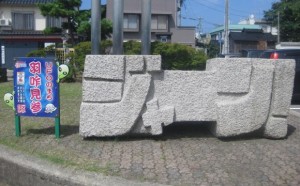
There are in fact three distinct types of onomatopoeia in the Japanese language: 擬声語 giseigo, 擬音語 giongo and 擬態語 gitaigo.
It rarely appears in beginner or intermediate textbooks, but spend a day with any native Japanese speaker and you’ll soon realise that onomatopoeia is a vital part of the language. Utterances such as, “The rain fell like ‘pssshaaaa’” and, “My heart was going ‘boom boom boom’ the whole time!” may come across as a little ineloquent when said in English, but in Japanese these kinds of mimetic words are not only considered perfectly acceptable, but pop up absolutely everywhere.
So if you’ve ever wondered what sound a Japanese pig makes, how best to describe a rolling boulder as opposed to a tiny marble, or would be perplexed if a doctor asked whether the pain you’re feeling is more shikushiku than kirikiri, now’s your chance to hone your language skills and add a few new words to your Japanese vocabulary!
Posted by Albert David Valderrama (Ibaraki-ken, 2010-present), JET Programme ALT/PA, co-founder and National Co-Representative of API AJET, and Editor of @API.
_______________________________
Issue #003 of the Asian Pacific Islander AJET special interest group’s webzine, “@API“, is out now! Click the image below to read the full issue.
What is “@API“?
“@API” is a web-based magazine put together by contributors and members of the Asian Pacific Islander Association for Japan Exchange and Teaching (API AJET).
What is “API AJET“?
Asian Pacific Islander AJET (API AJET) was created during the summer of 2012 following many talks about the specific issues the API community faces.
This special interest group (SIG) aims to create a supportive environment for all APIs living in Japan. We also hope to increase awareness about API issues and incite dialogue among curious JETs and non-JETs. Furthermore, API AJET hopes to act as a tangible resource for anyone interested in understanding an API’s unique perspective (as a foreigner) in Japan.
The group is open to all. Join to share, discuss, and learn about the API experience. Membership is free!
For more information go to our website at api.ajet.net, email us at api[at]ajet.net, or find API AJET on Facebook and Google+.
Life After JET: Food for Thought by James Foley
Recently posted to the JETAA Oceania Facebook group by Eden Law:
The JET Programme has lead to many opportunities and careers, sometimes rather unexpectedly. This is part of a series of articles by former JETs about their lives after participating on the programme, and how it has shaped their careers and paths. We hope that it will prove useful as an insight for potential applicants into what we as ex-JETs got from our experience, and maybe provide some nostalgic memories for others. Please feel free to contact us if you want to write about your own experience!
Our next article in our Life After JET series comes from James A. Foley. A former Iwaki-shi, Fukushima-ken JET (2007-2010), James met his wife (who was also a JET) on the JET Programme and has successfully carved out a career as a reviewer and critic of New York’s Japanese food scene for the famous Village Voice publication. James is also quite handy with the camera, and his blog contains his writing, articles and photography. A little known fact is that he’s totally metal on the shamisen.
This August marks the third year since I finished my time on JET; I have officially been gone from Japan for as long as I was there. Looking back now over my time on JET, the connections between the Japan experience and my work as a professional journalist are abundantly clear.
Prior to packing up life and moving from the middle of America to Iwaki City on the coast of Fukushima, I worked as a news reporter for a daily newspaper in suburban Kansas City, Mo. While I was in Japan I continued to write and hone my journalism skills, but mainly just for a blog I kept for my own records.
Towards the end of my JET tenure I had no life plan or job prospects. Read More
WIT Life #249: 小東京
WIT Life is a periodic series written by professional Writer/Interpreter/Translator Stacy Smith (Kumamoto-ken CIR, 2000-03). She starts her day by watching Fujisankei’s newscast in Japanese, and here she shares some of the interesting tidbits and trends along with her own observations.
My interpreting travels find me in Los Angeles, where of course I made a stop at 小東京 (shou Toukyou, or little Tokyo). I enjoyed the legendary umami-packed uni cream sauce udon at Marugame Monzo, which opened this past spring. It is located right by the ever popular ramen joint Daikokuya and specializes in sanuki udon from Shikoku, handmade at the restaurant. The menu features traditional items as well, but its appeal lies in more unconventional offerings such as vongole udon and quattro cheese udon.
I am a huge uni fan but not so much of cream sauce, so wasn’t sure how I would take to the dish as it seemed excessively creamy. But you only live once so I decided to give it a try. Surprisingly, it was just the right amount of creamy! Certainly not something you would want to eat every day or even every week, but there was a nice balance between the uni and the cream and it was not as heavy as you might think. I somehow managed to finish the whole thing, a feat I didn’t think was possible upon first glance. Bottom line: if you are an uni lover and can deal with something relatively creamy, I think you will enjoy it.
My hotel is actually in Santa Monica this time, and I was excited to find about the existence of Read More
Benjamin Martin at the Japan Writers Conference
 Benjamin Martin (Okinawa, 2008-13), author of the award-winning YA fantasy series Samurai Awakening (Tuttle) and blogger at MoreThingsJapanese.com, will be among the presenters at the 2013 Japan Writers Conference to be held Nov. 2-3 in Okinawa. Here’s the official description of his presentation, titled “Getting Published When You Live On An Island”:
Benjamin Martin (Okinawa, 2008-13), author of the award-winning YA fantasy series Samurai Awakening (Tuttle) and blogger at MoreThingsJapanese.com, will be among the presenters at the 2013 Japan Writers Conference to be held Nov. 2-3 in Okinawa. Here’s the official description of his presentation, titled “Getting Published When You Live On An Island”:
This will be an overview of my experience getting published while living on an island with a total population of 550 people, and what I learned along the way that will help perspective authors and those still finding their way while living in Japan.
I will outline my journey into the publishing world while living on Kitadaito and Kumejima Islands in Okinawa, including the successes and pitfalls I found along the way. I will talk about the processes I used to write, the friends and resources that helped me refine my work, and things I wish I had known back then. I will touch on the predatory tactics of companies and resources for avoiding them, and also on the benefits of contests such as the ABNA. I will delve into my experience working without an agent, the pros and cons, and the opportunity I found with Tuttle Publishing, the benefits and trials of working with a smaller press. Finally, I’ll cover marketing from Japan, with ways I found to connect with the writing community. I will end with time for questions and/or discussion.
For details on the Japan Writers Conference, visit http://www.japanwritersconference.org/
To learn more about Benjamin, visit http://samuraiawakening.com/author/
RocketNews24: Scowling mascot brings a little fame to Japan’s least popular prefecture
Michelle Lynn Dinh (Shimane-ken, Chibu-mura, 2010–13) is an editor and writer for RocketNews24, a Japan-based site dedicated to bringing fun and quirky news from Asia to English speaking audiences.
Shimane Prefecture, ever heard of it? If your answer is a resounding “no,” you’re not alone. The oddly shaped prefecture stretching along the western coast of Japan is barely known within its own country, let alone abroad. But one disgruntled mascot is out to bring Shimane’s shortcomings to light, making fun of the prefecture’s lack of popularity and population, and giving the area a little boost in positive publicity online.
For the 95 percent of you who don’t know, Shimane is a prefecture in the Chugoku region of Japan. Its claim to fame is having the most elderly people of any other prefecture and the most centenarians. Year after year, Shimane battles it out with neighboring Tottori for the title of “least populated prefecture” and has repeatedly landed itself at the very bottom of lists ranking areas by popularity.
WIT Life #248: Ralph Carr’s Fight for Japanese-American Justice
WIT Life is a periodic series written by professional Writer/Interpreter/Translator Stacy Smith (Kumamoto-ken CIR, 2000-03). She starts her day by watching Fujisankei’s newscast in Japanese, and here she shares some of the interesting tidbits and trends along with her own observations.

The bust in Sakura Square of former CO governor Ralph Carr, who fought for Japanese-American civil rights
My interpreting for a State Department energy-themed delegation brings me to Denver, Colorado. In the past I’ve written here about the Japanese connection at Sakura Square, where former governor Ralph Carr who took a stance against internment camps during WWII was honored with a bust in 1976. He also was named “Person of the Century” by the Denver Post in 1999. Most recently, his contributions have been recognized by naming the new Colorado Judicial Center after him. This is a 695,767 square-foot building housing the Colorado Supreme Court, Court of Appeals, Supreme Court Law Library, the State Court Administrator, the Colorado Attorney General and the Colorado Public Defender. It seems like the perfect tribute to a past politician who sacrificed his political career rather than betray the rule of law.
Carr was the 19th governor of Colorado who served from 1939 to 1943. He was in office when FDR forcibly resettled residents of Japanese descent from the West Coast to a camp at Amache near Granada, Colorado. The relocation included Nisei who were U. S. citizens by virtue of being born in this country. While many politicians Read More
Around Japan in 47 Curries: Tottori nashi pear
Tom Baker (Chiba, 1989-91) is writing a 47-part series of posts on his Tokyo Tom Baker blog, in which he samples and comments on a curry from a different prefecture almost every week. Here’s an excerpt from his 13th installment, in which he reveals that Tottori Prefecture nashi pear curry has a cinematic connection:
 In 1990, I went to the theater to see the movie “Ghost.” Patrick Swayze plays a murder victim, and Demi Moore plays his grieving girlfriend. The villain who arranged the murder wants to find out how much she knows, so he sets out to seduce her. In the most shocking scene I saw on film that year, the actor Tony Goldwyn pulled out a crumpled paper bag and presented Demi Moore with some delectable “Japanese apple pears” – a rare, expensive and little-known treat in America, a gift meant to show his generosity and savoir-faire.
In 1990, I went to the theater to see the movie “Ghost.” Patrick Swayze plays a murder victim, and Demi Moore plays his grieving girlfriend. The villain who arranged the murder wants to find out how much she knows, so he sets out to seduce her. In the most shocking scene I saw on film that year, the actor Tony Goldwyn pulled out a crumpled paper bag and presented Demi Moore with some delectable “Japanese apple pears” – a rare, expensive and little-known treat in America, a gift meant to show his generosity and savoir-faire.
I was aghast. My beloved nashi had been introduced to the American public at last – but as a tool of seduction in the hands of a cold-blooded killer. Oh, the injustice! They might as well have taken those pears, chopped them into tiny pieces and made them into curry!
Well, 23 years later, I have learned that someone did just that.




